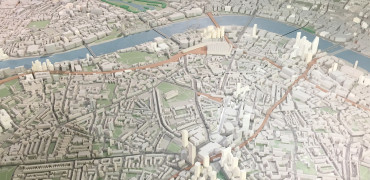Sustainability is a topic you can no longer ignore, although I do wonder how many others were like myself – broadly aware of what Sustainability is but never really delving deeper into the subject with genuine curiosity.
On the face of it, it’s a pretty simple idea that I think nobody in their right mind wouldn’t support.
Saving the planet right? For our children and generations to come, simple.
A changing climate, meaning hotter summers and colder winters.
Which is why we’ve started taxing plastic bags, banning single use plastic, replacing combustion engine vehicles with electrically powered alternatives, and changing the way we heat and cool our buildings with renewable technologies and advanced, energy efficient equipment.
This presents a fantastic opportunity for ambitious and forward-thinking construction companies.
Why 2050?
All of the above are measures in place which are aimed at reducing our carbon footprint, individually, as communities and as countries.
In 2019 the UK became the first major economy in the world to pass laws to end its contribution to global warming by 2050.
The target will require the UK to bring all greenhouse gas emissions to net zero by 2050, compared with the previous target of at least 80% reduction from 1990 levels.
This got me thinking, why 2050? And what are the consequences of not doing this?
Well, the reason for 2050 is simple, if we don’t drastically change our rate of carbon emissions by 2050, we will stand next to no chance in minimising the temperature rises needed to stop a global disaster.
A disaster waiting to happen
In 2019 the IPPCC issued a report which outlined the impacts of not slowing carbon emissions by 2030. Put simply, we will overshoot the acceptable threshold in global temperature rises, leading to global disasters.
It’s important for people to understand the reasons why we are all striving for net zero.
And to remember The Paris Climate Change Agreement, that President Biden has thankfully now re-signed up to, because if we are to fix this and stop a crisis becoming a catastrophe for the world, then we need to do so collectively – as individuals, as companies, and as countries.
The IPCC report couldn’t be clearer in outlining the trajectory of rising global temperatures and what this actually means in terms of things like sea level changes, agriculture & food production etc.
My colleague Russell Jones has previously written about this here on The Hub, with an article looking at all the famous cities that will be lost to rising sea levels.
An opportunity for construction
If the world is to get anywhere near meeting the Intergovernmental Panel on Climate Change and limit global temperature to below 2 degrees Celsius compared to the preindustrial age, then we can take a giant step towards this by reducing carbon from building construction – which is one of the largest sources of man-made emissions.
Companies who can demonstrate that they are tackling this challenge and can prove that they have taken the steps to reduce carbon will have the advantage of being able to access huge market.
With this in mind, it is positive to see so many construction companies starting to pledge to commit to their own Net Zero Carbon (NZC) plans (Morgan Sindall 2030, Willmott Dixon 2030, Balfour Beatty 2030) this is an extremely important step change in the UK construction market.
The benefits here are not only for future generations but also present a fantastic opportunity for ambitious and forward thinking construction companies.
Green buildings are thought to be one of the biggest investment opportunities of the next decade, creating a market over the next 9 years estimated to be $24.7 trillion and a significant target for construction companies who are up to the challenge.
Don’t forget retrofit
Buildings also represent one of the biggest challenge, and the greatest opportunity for change. I say challenge because we must remember that the overwhelming majority of our buildings of the future are already built.
We are constructing lots of new buildings – and these will rightly be designed with sustainability in mind from the start, including advanced, modern, energy efficient systems to make them confortable places to live, work and play.
But we also face the challenge of upgrading existing buildings as we can’t simply knock them all down and start again.
According to the United Nations Environmental Programme (UNEP) carbon emissions from buildings must be cut in half by 2030 to allow us to achieve net zero carbon buildings by 2050. The UNEP also says that this equates to a 6% fall in building sector emissions each year until 2030.
It’s worth reminding ourselves that the construction and operation of buildings is responsible for around 38% of global carbon emissions, so we simply have to find ways of making these existing buildings more sustainable.
The answers are already here
The Construction industry is already taking a long, hard look at itself and we can see the development of low-carbon building technologies and modern methods of construction, either available now or coming soon. We will also see more modular, factory-built components, which will increase the speed and quality of buildings.
But there is already technology available that will make a difference right now.
Replacing gas and oil with a heat pump for heating is now a viable option for almost any building and, whilst the government is talking of 600,000 heat pumps being installed in homes each year by 2028, it’s worth reminding ourselves of a quicker way of reducing carbon emissions with renewable heating – commercial properties.
Whilst the adoption of heat pumps in homes is speeding up, replacing gas or oil in commercial properties is one quick way of reducing carbon, lowering running costs and future-proofing the business.
More than just heating
But it’s not just heating that can make a difference as modern HVAC equipment is available right now that can make a world of difference.
Here at Mitsubishi Electric, we already have the equipment which can help solve this issue.
Buildings will always need to be heated, cooled and ventilated and now, it is possible to do so in the most energy efficient and sustainable way possible.
We also have a team of experts who can help and if this article has peaked your interest, you are welcome to email me or my colleagues Dan Smith, Chris Newman or Danielle Cordner for more information
Sam Cannon, Project Development Team


